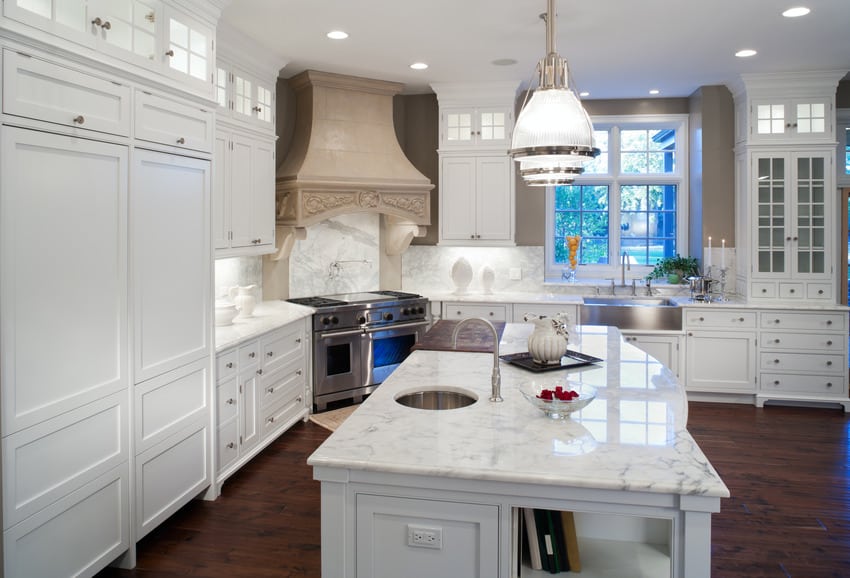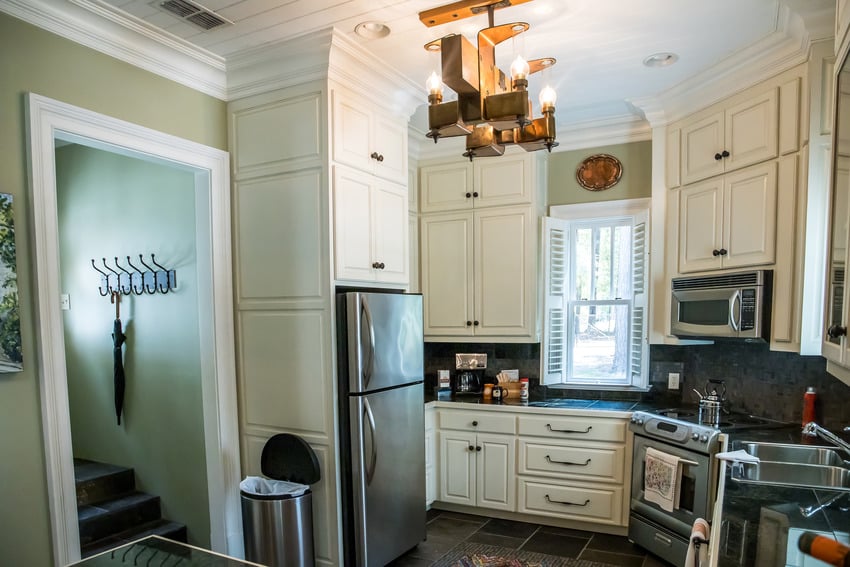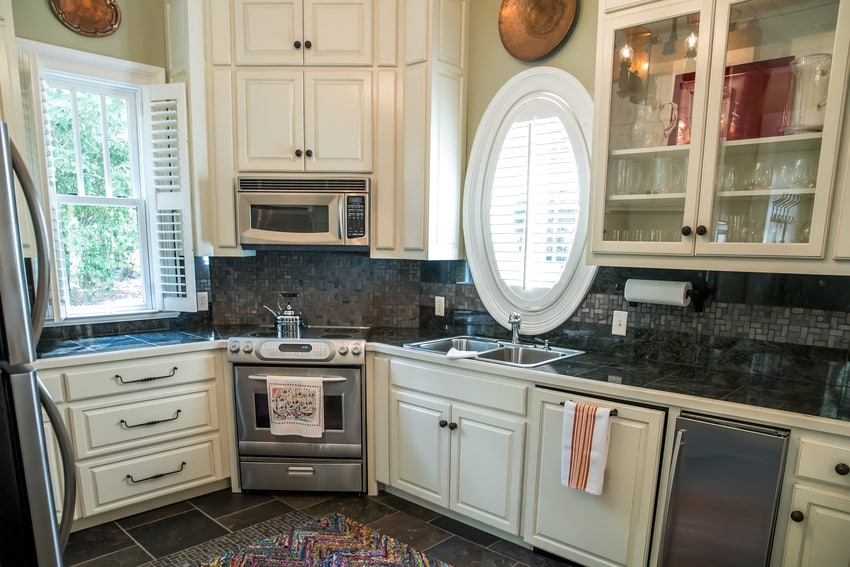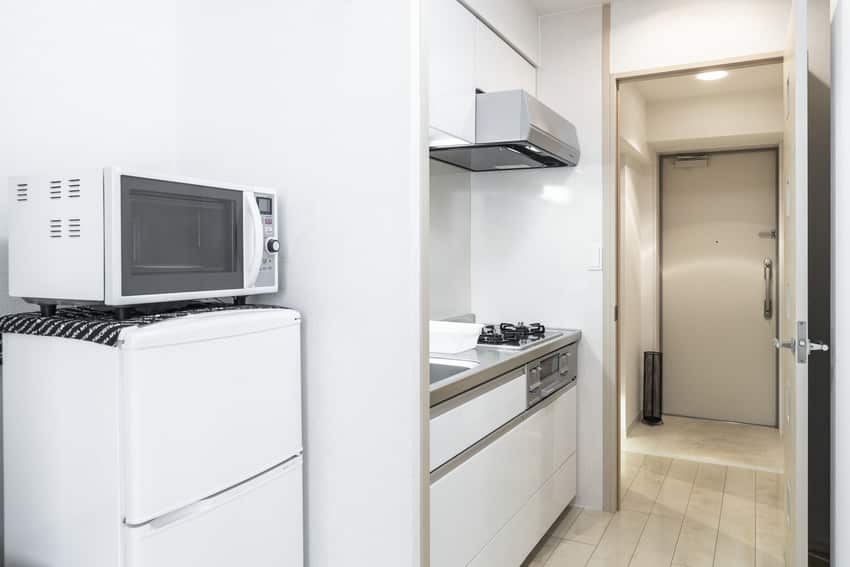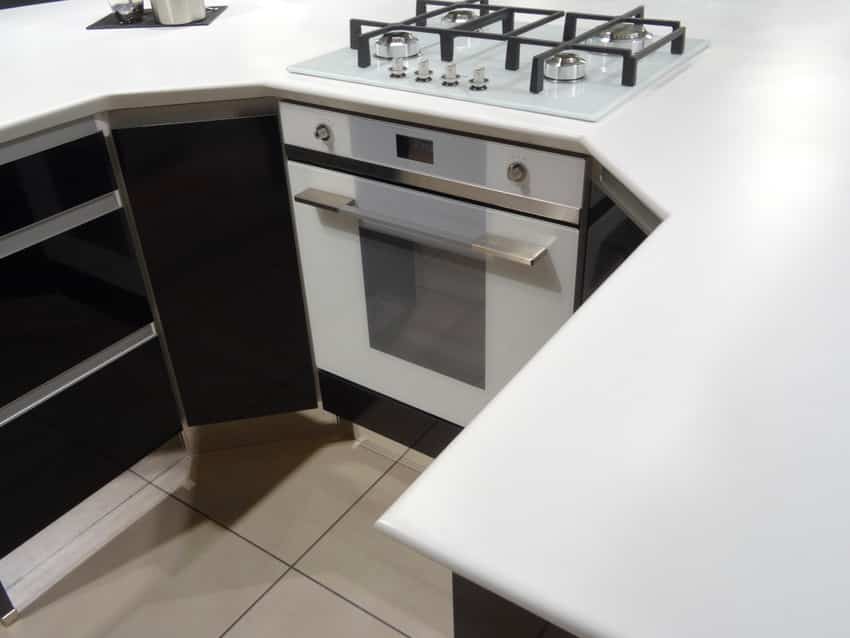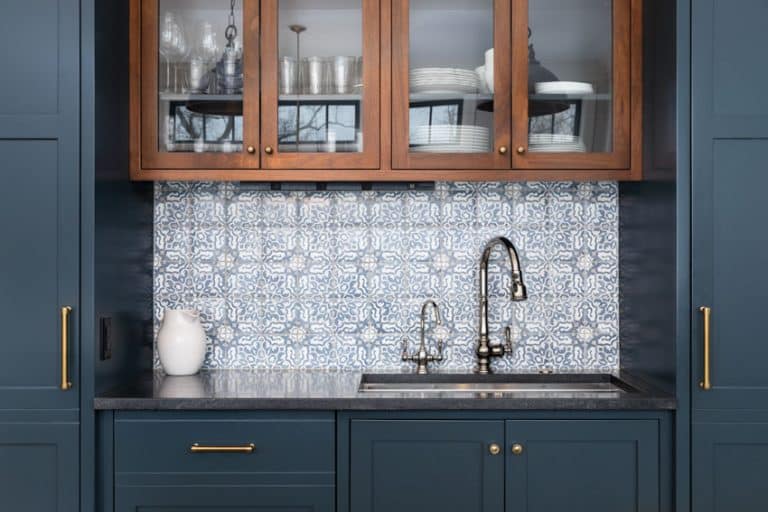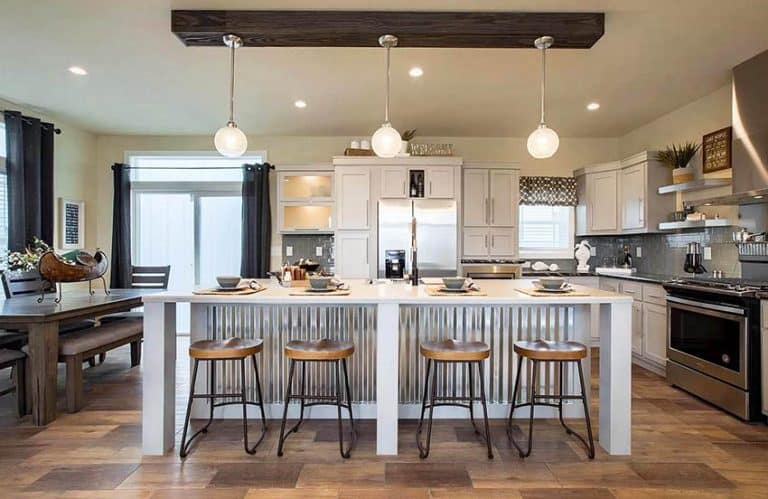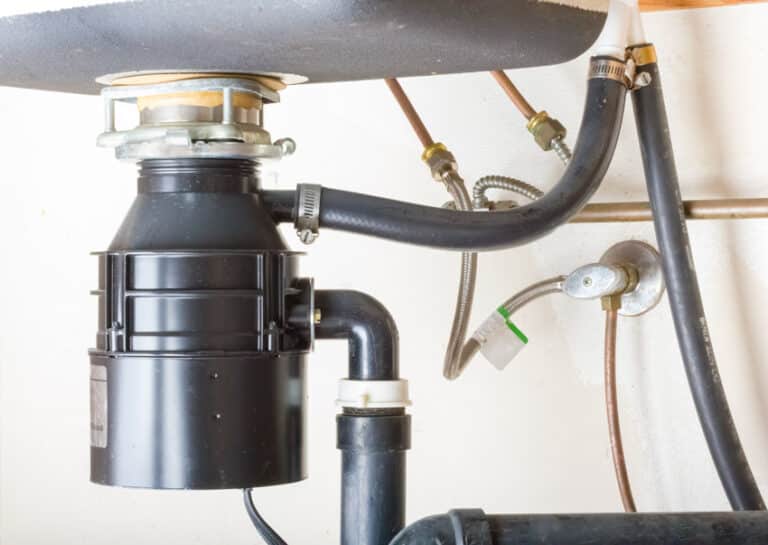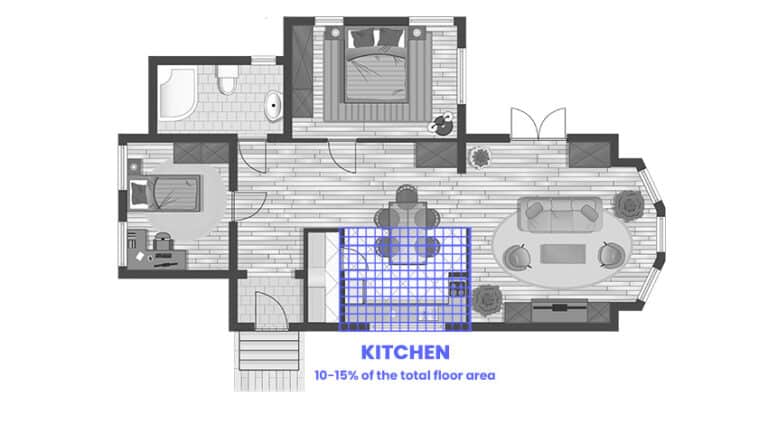Stove In Corner of Kitchen Pros and Cons
Here’s our stove in corner of kitchen pros and cons guide, including appliance layout dimensions and more.
In this article, we’ll review the benefits and drawbacks of installing a stove in the corner of your kitchen.
Corner stoves are basically regular appliances that are installed in the corner of the kitchen. Typically, this is simply due to space restrictions, but at times, it is a deliberate design choice.
When installing corner stoves, an interior ‘false wall’ is placed behind the stove, sealing off a triangular column of empty space.
Meanwhile, stoves can also be installed up against the wall. However, there are safety concerns associated with corner placement installed this way.
For one, should a stovetop fire break out, there is a chance that the side wall could ignite.
Corner stoves do not pose a significant fire risk, although it is important to vent or hood the exhaust properly, as well as to maintain adequate distance from wooden cabinets and the back wall.
Can You Put A Stove In A Corner?
Yes. A standard-sized stove and oven can be installed in the corner of the kitchen, provided that proper safety precautions are considered and maintained.
Still, just because you can do it doesn’t mean you should. If your stove is against the wall, or near a windowsill, you may simply find it difficult and awkward to use.
Playing Tetris with pot handles and banging your elbows each time you need to stir your chicken stock is by no means a good way to start your cooking routine.
Stove In Corner Of Kitchen Pros
Effective kitchen work triangle – Corner stoves are a great kitchen design layout since they make it much easier to apply the principles of the work triangle.
Easy to navigate to other areas of the room – In a design with a corner cooktop, it is easier to navigate the different floor plan, making for a more enjoyable and seamless cooking routine.
Allows for extra storage space – The design of this angled positioning allows for a recessed niche below the ventilation unit that can be used as additional storage.
Stove In Corner Of Kitchen Cons
Hard to reach stove top – There are some big drawbacks to installing a stove in the corner. If installed flush with the countertop and against the wall, it may be difficult to fit pots and pans on the stovetop, and you may find it uncomfortable to stand close to the wall while you are cooking.
Awkward angles – The way an angled stovetop is positioned means you have to stand directly in front to access the space. This can be challenging, especially if you have to reach across a hot oven door to reach something.
Unused kitchen space – While corner placement is much more comfortable to use and feel integrated into the design as a whole, this layout also leaves a large chunk of unused space.
If you’re able to use this space as storage, such as creating a small closet accessed from an adjoining room, installing a corner stove might be a good idea.
Kitchen Layout With Stove In The Corner
The most important thing to consider when laying out a corner stove in your kitchen is the work triangle.
The concept of the work triangle is as follows: Most cooking tasks are done at any of these three stations: sink, stovetop, and prep area.
To work best, these three stations should form a triangle in your kitchen design, with you at the center. Each station should not be less than four feet and no more than 9 feet from the other two.
A one-cook kitchen runs most efficiently when the work triangle configuration is used. In addition, corner stoves can be easily integrated into a work triangle design.
The kitchen sink would usually be on a separate counter, particularly on the island, which completes the triangle.
Nonetheless, there are some restrictions when it comes to placing a stovetop in the layout. For one, stoves should never be installed directly in front of a window due to potential fire safety risks.
The same applies to putting a range near the entrance, as people coming in and out may accidentally knock a pan off the stovetop and injure themselves.
Corner Stove In Small Kitchen
In small kitchens, there may be limited space available for your appliances, and you have no choice but to put the stovetop in the corner. Here are some things to keep in mind:
Remove any curtains and blinds to reduce potential fire hazards if the stovetop is under a window. Do note that electric or convection burners are less likely to start a fire than gas-powered burners.
Moreover, consider installing a stainless steel backsplash to easily catch and clean dirty spots after cooking and reduce the risk of molds. Also, always keep a fire extinguisher handy and make sure to get it inspected regularly. Lastly, never leave the stovetop unattended.
Corner Kitchen Stove Dimensions
Standard stove dimensions may vary, but corner kitchen stovetops are generally 30 or 36 inches wide. A 30-inch stove normally has four burners, while a 36-inch stove usually comes with six burners.
Meanwhile, a 30-inch wide stove is recommended to install with between 45 and 48 inches of wall space on each side. On the other hand, there is a required wall space between 51 and 54 inches for a 36-inch wide stovetop installation.
Finally, building regulations require that your upper cabinets be hung at least 24 inches from the surface of your stovetop to prevent the risk of fire.
How Close Should A Corner Be To A Stove?
There are actually no standard regulations requiring how close your stovetop should be to the wall. However, make sure to check the building codes for your locality to confirm that your kitchen layout strictly adheres to the safety precautions.
Nonetheless, it is still recommended that the burners on your stove’s range be at least 12 inches (one foot) away from the sidewall due to the fire risk associated with having the wall exposed to prolonged and intense heat.
If you install a stove against the wall of your kitchen, make sure to have a plan for controlling the grease. Using grease-resistant paint, installing a backsplash, and using a splatter screen or grease guard when you’re cooking will help keep your floor plan looking nice and spotless.
If you are planning a kitchen layout with a corner stove you may want to use a kitchen design software program to plan your space. This will enable you to visualize your project and attempt to get a feel for space considerations before doing any costly work.

